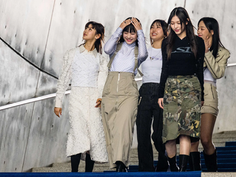The Spirit of Lunar New Year
- Iruni Kalupahana
- Nov 9, 2024
- 3 min read
Iruni Kalupahana, JadeTimes Staff
I. Kalupahana is a Jadetimes news reporter covering Culture

Origins and Significance of Lunar New Year
The Lunar New Year, also known as the Spring Festival, marks the arrival of spring and the start of the new year in the lunisolar calendar. This festival, celebrated for over 3,000 years, is observed mainly in China but is also widely celebrated across Asia, including in Vietnam, South Korea, Malaysia, and Singapore.
Rooted in legends and ancient traditions, the festival usually begins between January 21 and February 20, lasting fifteen days from the first new moon to the first full moon of the lunar calendar. The origins of the festival include various myths, such as the tale of Nian, a mythical beast believed to attack villages at the beginning of each new year. According to folklore, loud noises, red decorations, and fire scared Nian away, and these elements remain integral to the celebrations today.
Customs and Traditions of the Festival
Lunar New Year celebrations involve extensive preparations and symbolic practices to welcome good fortune. Approximately ten days before the holiday, families clean their homes to rid them of any lingering bad luck, a practice known as "sweeping of the grounds." During this time, decorations are put up, particularly in red, symbolizing joy and prosperity.

Family gatherings are central to the holiday, especially the "reunion dinner" on New Year's Eve, where symbolic foods are served, such as fish for abundance. As the celebrations continue, children and unmarried adults often receive red envelopes, or lai see, filled with money, representing good luck and blessings for the year ahead. Festivities include fireworks, lion and dragon dances, and community parades, all designed to bring good fortune and drive away any misfortune.
The Lantern Festival and the Zodiac
The festival concludes with the vibrant Lantern Festival on the fifteenth day, celebrated under the full moon. On this night, people light colorful lanterns and enjoy foods like yuanxiao (sticky rice balls) to symbolize family unity.
In addition to these customs, the Lunar New Year is linked with the Chinese zodiac, which operates on a twelve year cycle with each year associated with an animal, such as the dragon, rabbit, or ox. Unlike the Western zodiac, which changes by month, the Chinese zodiac changes by year, influencing the personalities of those born in each respective year. The zodiac and customs bring people together to honor family, ancestors, and good fortune for the coming year.

Regional Variations and Global Celebrations
While Lunar New Year originated in China, it is celebrated in diverse ways across different Asian countries, each adding unique customs to the holiday. In Vietnam, for example, the festival is called Tet, and families prepare offerings to honor their ancestors, as well as decorate homes with peach blossoms and kumquat trees. In South Korea, the celebration is known as Seollal, and includes ancestral rites, family gatherings, and traditional games like yut nori. In Malaysia and Singapore, vibrant parades and firework displays are held, and people gather in markets to buy festive foods and decorations.
Beyond Asia, communities worldwide, especially in cities with significant Asian populations, hold large Lunar New Year parades, lion dances, and cultural festivals. This blend of traditions reflects the festival’s global significance as a time to welcome the new year with unity, prosperity, and goodwill.



























Comments